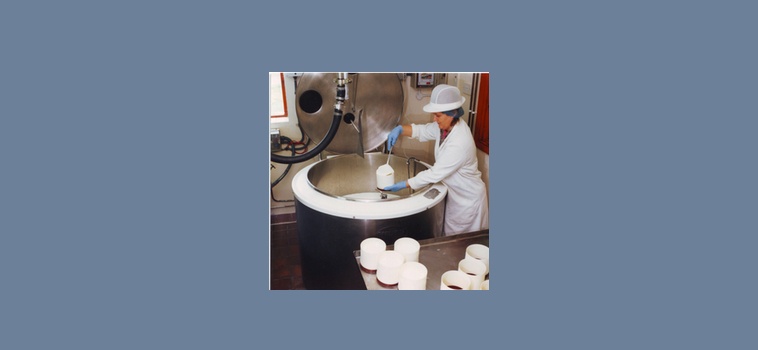Judy's tip: How to store cheese
29/10/02 09:46 admin Judy's Tips, Article
For cheese, the "good old days" were when we didn't have central heating, double glazing or fridges.
Before the 1960s many homes would have a pantry for storing food, which was usually located in the north-east corner of the house and remained cool throughout the year at around 8 to 10 °C.
This is was the perfect temperature and conditions for storing cheese.
Unfortunately, most of us now have centrally heated homes and larder fridges, which usually run at temperatures around 5 °C and dehydrate the cheese unless it's tightly wrapped.
A truckle or wheel of cheese is a living thing, maturing and developing over time – just like a fine bottle of wine.
We cheese-makers store and mature the cheese in specific ripening rooms, grading them regularly, and selecting them for the specific requirements of the customer before it leaves us.
Each cheese will then carry on maturing slowly in the refrigerator on the deli counter, and in your fridge until it is consumed.
The dreaded plastic bag
When you buy cut cheese it will usually be wrapped in plastic, which isn't ideal for storing as it doesn't allow the cheese to breath.
As the cheese matures, or if there is a rise in temperature, moisture will be drawn out of the cheese and is trapped, causing the cheese to sweat.
Let the cheese breathe
The best way to store cheese is to take it out of the plastic packaging as soon as you get home.
Firstly wrap it in greaseproof paper and then wrap tightly in kitchen foil and pop it in the fridge. This will keep the cheese moist – while still allowing it to breathe – and safe from any flavour taint it may pick up from other foods being stored.
Blue cheese
If you have bought blue cheese, this too is better stored in foil it keeps the cheese moist and allows the ripening process to continue unhindered.
If you keep it for longer than the date on the deli ticket, you may find the cut surface starts to bloom with a blue mould coat – don't worry, this is completely normal and the whole cheese remains edible. However it is always better to consume your cheese within seven to ten days of purchase.




